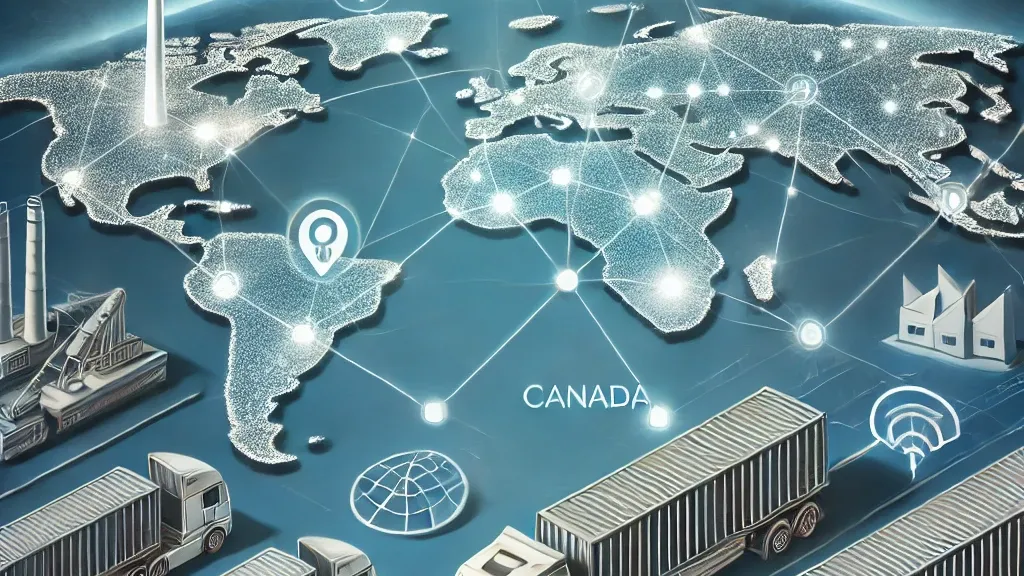Explore Canada’s dynamic economic landscape and its impact on international logistics. Stay informed on key topics shaping trade and transportation in the region.
In the ever-evolving global economic landscape, Canada continues to be a pivotal player, with its diverse economy and strategic trade relationships. Today, several hot-button economic topics dominate the Canadian discourse, each with potential ramifications for businesses, particularly those in the international logistics sector. This blog post will delve into these topics, exploring their implications for your company as an international logistics provider.
1. The Impact of Tariff Threats on the Canadian Economy
Recently, the specter of tariffs has loomed large over the Canadian economic horizon. The threat of tariffs, even if not yet imposed, has cast a long shadow of uncertainty over business investments in Canada. This uncertainty is detrimental to commercial investments and, consequently, to the country’s economic growth prospects. For international logistics companies like yours, the implications are multifaceted.
Firstly, tariff threats can disrupt supply chains. With Canada heavily reliant on trade, particularly with the United States, any disruption in trade relations can lead to delays, increased costs, and reduced efficiency in logistics operations. Your company needs to stay abreast of these developments, adjusting routing and storage strategies to mitigate potential disruptions.
Secondly, the uncertainty surrounding tariffs can affect inventory management. Businesses may opt to hold more inventory to buffer against potential supply chain disruptions, increasing storage needs and logistics costs. As an international logistics provider, you can offer flexible storage solutions and inventory management services to help clients navigate this uncertainty.
2. Canada’s Economic Recovery and Growth Dynamics
Despite these challenges, Canada’s economy has demonstrated resilience, with signs of recovery and growth.The services sector, finance, energy, technology, and manufacturing continue to be the backbone of the Canadian economy. For international logistics, this recovery presents both opportunities and challenges.
On the opportunity front, as the economy grows, so does the demand for goods and services. This increased demand translates into more shipments, providing a boost to the logistics sector. Your company can capitalize on this growth by expanding its service offerings, enhancing efficiency, and improving customer service to attract more clients.
However, growth also brings challenges. As the economy expands, so does the complexity of supply chains. Ensuring timely and efficient delivery of goods becomes more difficult as volumes increase and routes become more congested. Your company needs to invest in advanced logistics technologies, such as automation and AI, to manage this complexity and maintain high levels of service.

3. The Role of International Trade in Canada’s Economic Future
Canada’s economy is deeply intertwined with international trade, with the United States being its largest trading partner. However, Canada is also diversifying its trade relationships, expanding its export markets to Asia and other regions. This diversification presents both opportunities and risks for international logistics companies.
On the opportunity side, expanded trade relationships mean more markets to serve and more goods to move. Your company can tap into these new markets by establishing partnerships with local logistics providers, offering customized solutions tailored to the specific needs of each market.
The risk lies in the potential for trade disruptions. As Canada diversifies its trade relationships, it also exposes itself to potential trade barriers, such as tariffs and quotas. Your company needs to stay informed about these developments, adjusting its logistics strategies to minimize disruptions and maintain the flow of goods.
4. The Impact of Labor Market Dynamics on Logistics Operations
The Canadian labor market has also been a hot topic of late, with unemployment rates fluctuating and labor participation rates declining. These dynamics have direct implications for the logistics sector, which relies heavily on a skilled and available workforce.
Firstly, labor shortages can lead to increased labor costs. As the demand for logistics services grows, competition for skilled workers intensifies, driving up wages and benefits. Your company needs to invest in employee training and retention programs to ensure a stable and skilled workforce, even as costs rise.
Secondly, labor market dynamics can affect logistics efficiency. With a shortage of available workers, logistics operations may experience delays and inefficiencies. Your company can mitigate these effects by adopting lean logistics practices, optimizing workflows, and leveraging technology to automate routine tasks.
5. The Role of Technology in Shaping the Future of Logistics in Canada
Technology is playing an increasingly critical role in the logistics sector, driving efficiency, reducing costs, and improving customer service. In Canada, the adoption of advanced logistics technologies is accelerating, driven by the need to compete in a global market and meet the demands of a diverse and growing economy.
For international logistics companies like yours, embracing technology is not just an option but a necessity. By investing in automation, AI, and other advanced technologies, your company can streamline operations, reduce errors, and improve response times. This, in turn, will enhance customer satisfaction and drive business growth.
Moreover, technology can help your company adapt to changing market conditions. As trade relationships evolve and supply chains become more complex, technology provides the flexibility and scalability needed to manage these changes effectively.
Conclusion
In conclusion, Canada’s hot economic topics today have direct implications for the international logistics sector. From tariff threats and economic recovery to international trade dynamics and labor market challenges, these topics shape the operating environment for logistics companies.
To thrive in this environment, your company needs to stay informed, adapt to change, and embrace technology. By doing so, you can capitalize on the opportunities presented by Canada’s diverse and growing economy while mitigating the risks associated with its challenges. In the end, it’s not just about surviving in a competitive market but about thriving and driving sustainable growth for your business.
A Guide to China’s Top 5 Airports 2025
Soaring Through the Middle Kingdom: A Guide to China’s Top 5 Airports 2025, China’s meteoric…
The Ultimate Guide to Sourcing & Shipping Christmas Ornaments from China
The Ultimate Guide to Sourcing & Shipping Christmas Ornaments from China. The holiday season is…
Decoding Shunde: The Ultimate Guide to the World’s Appliance Capital
Decoding Shunde, If you’ve ever turned on a microwave, blended a smoothie, or adjusted your…



